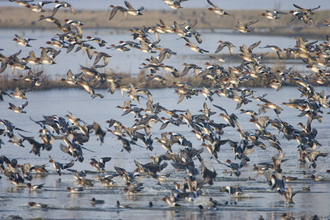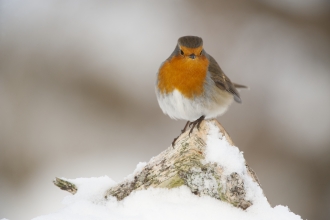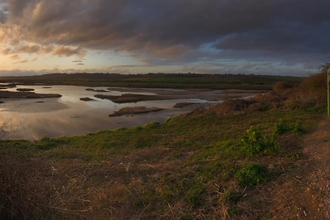Winter bird watch at Two Tree Island
Two Tree Island nature reserve is a winter refuge of mudflats, creeks and saltmarsh, making this an ideal habitat for a huge variety of winter wildfowl and waders.
John Attiwell, volunteer for Essex Wildlife Trust, joins Stuart Brooker, our Lead Reserves Ecologist, to monitor the winter birds at this wetland paradise to help our conservation of these wonderful waders and waddlers.







